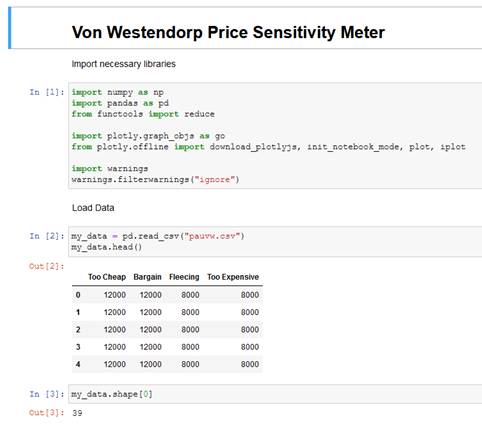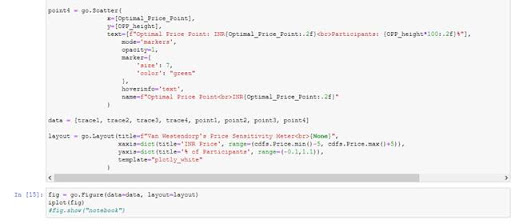Impending Technological Apocalypse amidst IR 4.0 and Web 3.0: The Need for Anthropocentric Information Security
As we stand on the precipice of the Fourth Industrial
Revolution (IR 4.0) and the dawn of Web 3.0, the cybersecurity landscape is evolving
at an unprecedented pace. The convergence of physical, digital, and biological
spheres is creating a world of infinite possibilities – and equally boundless
vulnerabilities. In this article, we'll explore the potential technological
apocalypse looming on the horizon and argue for a shift towards anthropocentric
information security to mitigate these risks.
The Perfect Storm: IR 4.0 and Web 3.0
The Fourth Industrial Revolution is characterized by the
fusion of technologies that blur the lines between the physical, digital, and
biological spheres. Artificial Intelligence, Internet of Things (IoT),
robotics, and quantum computing are just a few of the technologies reshaping
our world. Simultaneously, Web 3.0 promises a decentralized internet built on
blockchain technology, offering increased user autonomy and data ownership.
While these advancements promise unprecedented
opportunities, they also present significant security challenges:
- Expanded
Attack Surface: With billions of connected devices, the potential
entry points for cybercriminals have multiplied exponentially.
- AI-Powered
Attacks: Malicious actors are leveraging AI to create more
sophisticated and targeted attacks, outpacing traditional security
measures.
- Quantum
Threat: The advent of quantum computing threatens to render current
encryption methods obsolete, potentially exposing vast amounts of
sensitive data.
- Decentralized
Vulnerabilities: While Web 3.0's decentralized nature offers benefits,
it also introduces new security challenges, particularly in areas like
smart contract vulnerabilities and private key management.
The Impending Technological Apocalypse
The convergence of these factors could lead to a
technological apocalypse – a scenario where our increasing dependence on
interconnected systems becomes our Achilles' heel. Imagine a world where:
- Critical
infrastructure is held hostage by ransomware attacks at an unprecedented
scale.
- AI-driven
deepfakes manipulate financial markets and political landscapes.
- Quantum
computers crack encryption protecting sensitive government and financial
data.
- Decentralized
autonomous organizations (DAOs) are hijacked, leading to massive financial
losses.
This isn't science fiction – these are real possibilities
that security professionals must prepare for.
Man vs. Machine: Real-World Examples
The "Man vs. Machine" scenario is no longer
confined to the realm of science fiction. Here are some real-world examples
that highlight the growing tension between human control and machine autonomy:
- Algorithmic
Trading Gone Wrong: In 2010, the "Flash Crash" saw the Dow
Jones Industrial Average plummet nearly 1,000 points in minutes due to
high-frequency trading algorithms, highlighting the potential for AI to
cause significant financial disruption.
- Autonomous
Vehicle Accidents: The fatal crash involving a Tesla in Autopilot mode
in 2016 raised questions about the reliability of AI in critical
decision-making scenarios and the appropriate level of human oversight.
- AI
in Healthcare Diagnosis: IBM's Watson for Oncology was found to make
unsafe and incorrect treatment recommendations, demonstrating the risks of
over-relying on AI in critical healthcare decisions.
- Facial
Recognition Misidentification: In 2018, Amazon's Rekognition facial
recognition system incorrectly matched 28 members of Congress to criminal
mugshots, highlighting the potential for AI bias in law enforcement
applications.
- Social
Media Algorithm Manipulation: The Cambridge Analytica scandal revealed
how AI algorithms could be exploited to manipulate public opinion and
influence democratic processes.
These examples underscore the need for a human-centered
approach to technology development and deployment, especially in high-stakes
environments.
The Need for Anthropocentric Information Security
To avert this technological apocalypse, we need a paradigm
shift in our approach to information security. Enter anthropocentric
information security – a human-centered approach that puts people at the heart
of security strategies.
Key principles of anthropocentric information security
include:
- Human-Centric
Design: Security solutions should be designed with human behavior and
limitations in mind, making secure practices intuitive and easy to adopt.
- Ethical
Considerations: As AI and automation play larger roles in security, we
must ensure that ethical considerations guide their development and
deployment.
- Digital
Literacy: Invest in widespread digital literacy programs to create a
more security-aware population.
- Adaptive
Security: Develop security systems that can learn and adapt to human
behavior, providing personalized protection.
- Transparent
AI: Ensure AI-driven security solutions are explainable and
transparent, allowing human oversight and intervention.
- Privacy
by Design: Incorporate privacy considerations from the ground up in
all technological developments.
- Resilience
Training: Prepare individuals and organizations to respond effectively
to security incidents, fostering a culture of cyber resilience.
AI Ethical Considerations
As AI becomes increasingly integrated into our security
infrastructure, it's crucial to address the ethical implications:
- Bias
and Fairness: AI systems can perpetuate and amplify existing biases.
For example, facial recognition systems have shown higher error rates for
minorities and women. We must ensure AI security systems are trained on
diverse datasets and regularly audited for bias.
- Transparency
and Explainability: The "black box" nature of many AI
algorithms poses a challenge for security. We need to develop AI systems
that can explain their decision-making processes, especially when those
decisions impact human lives or rights.
- Accountability:
As AI systems become more autonomous, questions of liability arise. Who is
responsible when an AI-powered security system makes a mistake? We need
clear frameworks for AI accountability in security contexts.
- Privacy:
AI systems often require vast amounts of data to function effectively. We
must balance the need for data with individuals' right to privacy,
implementing strong data protection measures and giving users control over
their information.
- Human
Oversight: While AI can process information faster than humans, it
lacks human judgment and contextual understanding. We must maintain
meaningful human oversight in critical security decisions.
- Autonomous
Weapons: The development of AI-powered autonomous weapons raises
serious ethical concerns. We need international agreements to regulate or
prohibit such systems.
- Job
Displacement: As AI takes over more security tasks, we must consider
the impact on human security professionals. Retraining programs and new
job creation should be part of our security strategies.
Implementing Anthropocentric Information Security
To implement this approach, organizations and policymakers
should:
- Invest
in human-centered security research and development.
- Incorporate
behavioral sciences into security strategies.
- Develop
comprehensive digital literacy programs.
- Create
regulatory frameworks that mandate ethical AI and privacy considerations
in technology development.
- Foster
collaboration between technologists, ethicists, and policymakers.
- Establish
ethics review boards for AI security systems.
- Develop
international standards for AI ethics in cybersecurity.
Conclusion
As we navigate the complexities of IR 4.0 and Web 3.0, the
threat of a technological apocalypse looms large. The real-world examples of
"Man vs. Machine" scenarios highlight the urgent need for a more
balanced approach. By shifting towards an anthropocentric approach to
information security and carefully considering the ethical implications of AI,
we can harness the power of these technological revolutions while mitigating
their risks. It's time to put humans at the center of our security strategies –
our digital future depends on it.
Read My New Book
"ManusCrypt: Designed For Mankind" is a groundbreaking work by Prashant Upadhyaya that explores the intersection of humanity and technology in the digital age. This book delves into the concept of 'ManusCrypt,' a term that likely combines 'Manus' (Latin for 'hand,' symbolizing human touch) and 'Crypt' (suggesting encryption or protection).




































